Continuing the ongoing series of interviews with creative artists working on various aspects of movie and TV productions, it is my pleasure to welcome Tom Lisowski. In this interview he talks about what production design is, when it needs to stay invisible and the misconceptions viewers have about the field, how the transition from film to digital affected what happens on set, balancing artistic and financial aspects of a production, shifts in the world of story telling between features, episodic TV and streaming services, as well as his work on music videos and commercials. The second half of the interview is about Tom’s work on the recently released “Safelight”, a journey of two troubled teenagers that takes them from a highway truck stop to a road trip down the California coast to photograph lighthouses.

Kirill: Please tell us about yourself and your path so far.
Tom: I went to art school where I studied painting, and after that I started doing art for video games. My forte was environments – basically the same thing that I do for movies now. Because I was doing games I was hired to do a mural for a city cafe set on a TV show. The mural had some videogame-style characters in it. The production designer of the show asked me if I could also draw pictures of the sets. I ended up becoming her art director for a few different projects, TV and features. I discovered production design through her. I did go to art school, but at the time I wasn’t aware the field of production design existed. I love how through your interviews you’re bringing awareness to a field that most people are unaware of.
People know that there’s a director, a cinematographer, and actors, but they don’t know there’s a production designer. A lot of times that’s a good sign. They are in an environment and they don’t know that it was created by someone. If you do a good job, they believe it’s a real place.
Kirill: When people ask you what you do for a living, is it hard to make people understand, especially when we’re talking about productions set in the modern day? After all, we all are surrounded by these environments every single day.
Tom: There’s definitely a misconception about movies set in the modern day. Everything is recognizable, and you’re not in a cave or a castle. The misconception is that someone just showed up with the camera and shot everything. But it’s the same as when you’re writing a novel and choosing what part of an experience to describe. In a movie you’re very careful to choose what the audience sees.
Also, certain things generally look bad on camera, for example white walls. And there are certain elements and props that you use to tell your story. If a character is cold, you want your set dressing to communicate that. You tell the story through the environments, and everything in that whole movie is supporting that story. Everything you do is based on telling the story, whereas in real life everything is totally random [laughs].
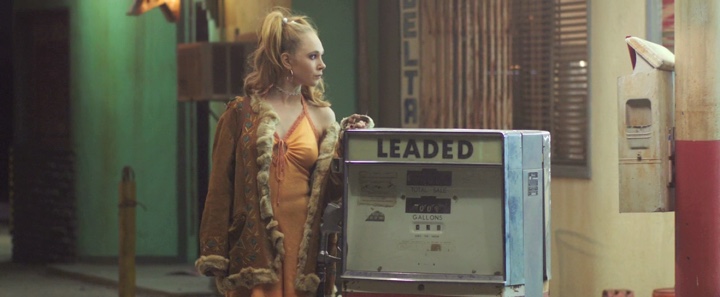
Kirill: I like that you mentioned that if you do your job well, it is unseen in a certain sense. As a viewer, I want to follow the story and not look at that wall. You want to send that subliminal message, but not be explicit about it.
Tom: Exactly. We always talk about whether the production design should be invisible or visible. It depends. If you’re going to an alien planet, you’re showing an environment that nobody has ever seen before. A big part of the experience is seeing something amazing, and the audience is definitely noticing it. You’re looking at that environment, and it becomes a huge part of the experience. Some people say that the set becomes a character.
But at the same time, you don’t want the audience to be thinking about it. If somebody is designing the costumes for the characters, you want the viewer to believe that they just woke up that morning and put those clothes on. If you start thinking about what goes on behind the scenes, it takes you out of the story. But there are movies where our work is center stage.
Kirill: Does it help to have the digital pipeline on the set, where you together with the director and the cinematographer can see on the monitor how the sets are captured by the camera?
Tom: That’s especially important for the on-set dresser. They are making sure that everything that needs to be in the frame is in there. I try to be on the set as much as possible. I’m always there when we open the set and start shooting. As much as I can be I’m there to see the set through to completion.
However, a lot of the time I’m also hard at work on the next set. Often the next location isn’t available until the very last minute, so we have to be building and dressing while we’re shooting something else. So I’ll be there, looking at the monitors to make sure everything looks good, and then I have to be off to the next set. I’ll have my on-set team continue to check the monitor constantly.
Nowadays you can see the edits as you’re working on the movie. Not long after you shoot it you can see a rough cut of the scene you just did, and the director will know if something’s missing. Back in the day you had to wait forever for the film to be developed, and then for somebody to cut it together.
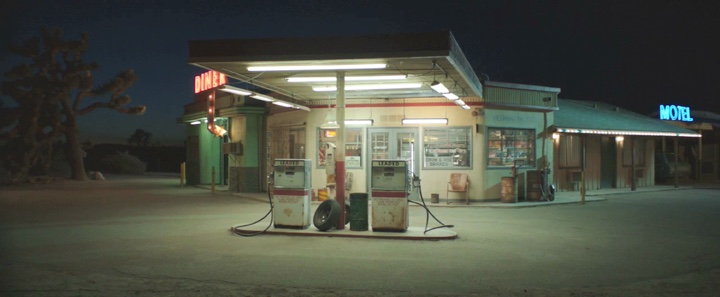
Kirill: Do you remember a sense of things going unnecessary slow back then?
Tom: You had to trust your gut and use your imagination a lot more when you couldn’t see it. And all the amazing film-makers didn’t see any of it back in the day when everything was done on film. They would go with their gut and hope that everything was great. Now you can see it sooner, and that makes you become a better production designer, faster.
Kirill: Bringing you back to the beginning of your career on set, what was the most surprising thing you saw around how movies are made?
Tom: I was always blown away to see the really big sets. The mechanics of it is amazing. You see a big cave, and you think that somebody brought in all these big rocks. But it’s all carved out of foam, and painted amazingly well. Or you’re looking at the walls of this mansion, and they are just a very thin piece of lauan plywood. It was eye-opening to see a lot of that stuff.
When I went from video games to the world of movies, I loved the physical aspect of everything. I loved that you can stand in front of it, look at it and walk around it. Before that I had textured polygons on a computer screen. But seeing everything in real life was a big part of the magic of it.
There are also sets where you use forced perspective, with smaller things in the back and bigger things in the front. That tripped me out early on, and I try to use that in my sets sometimes when we want to make the set seem bigger. We had this graveyard set, and we built it all on a stage. We wanted to make it feel like it went on forever, so the trees in the back are smaller so that they look like they’re further away.
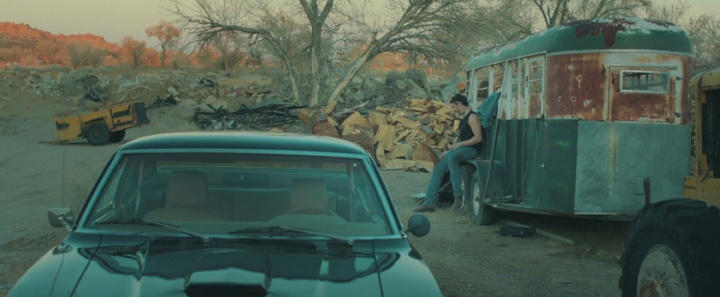
Continue reading »
Continuing the ongoing series of interviews with creative artists working on various aspects of movie and TV productions, it is my delight to welcome Anastasia White. After doing art direction on the pilot episode of “Mr Robot”, she joined the second season as the show’s production designer. In this interview Anastasia talks about her first memories of working on movies, her journey through the various roles in the art department, the arc of a production from initial explorations to watching sets being torn down at the end, and evolving and extending the Mr Robot’s universe (including the delightful trip down the memory lane back to the ’90s for an especially wonderful twist).
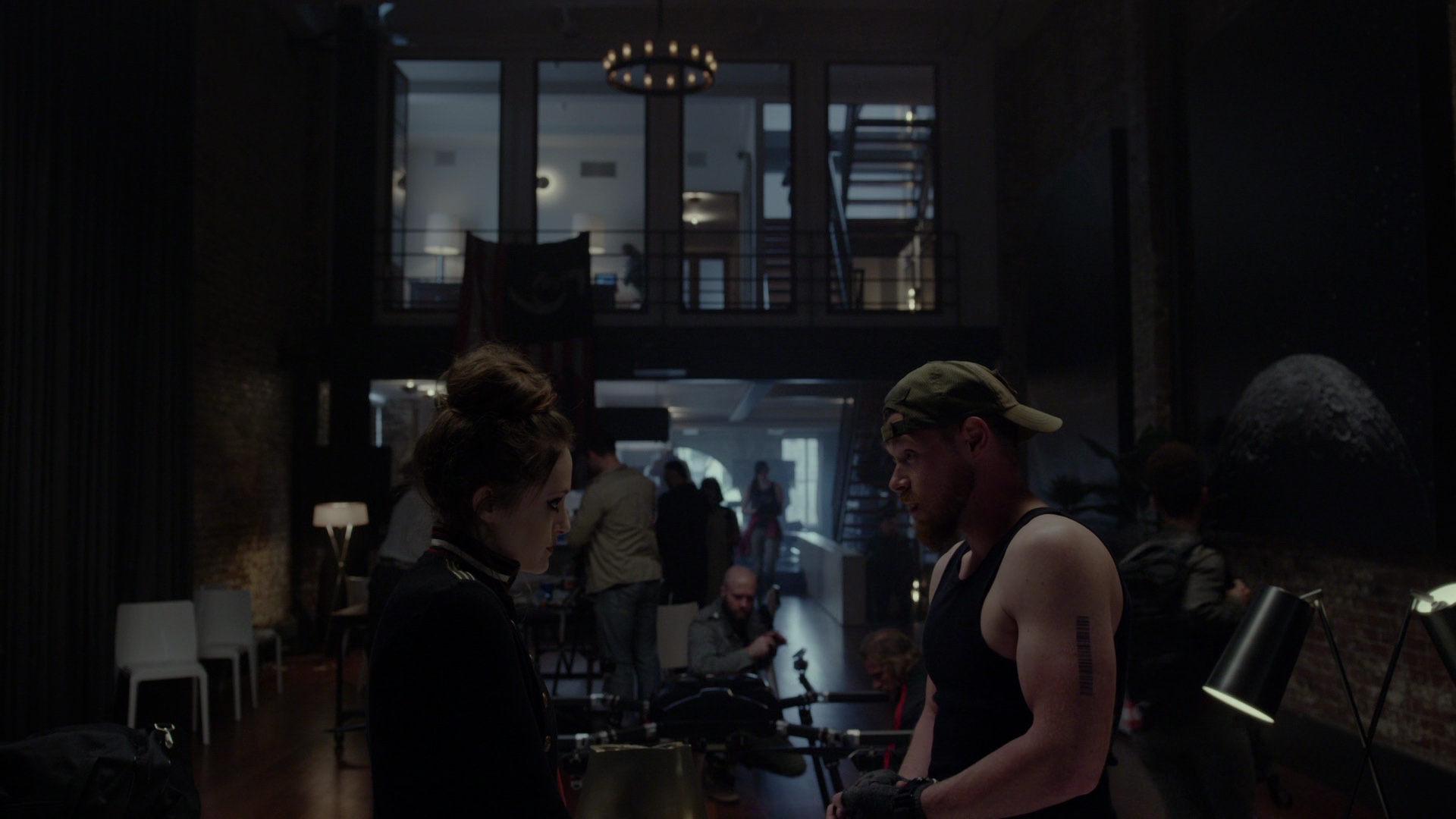
Kirill: Please tells us about yourself and your path so far.
Anastasia: Throughout college I was in the music business as a side job. While I was there, I realized that I wanted to do something a little bit more creative, and I left music industry when I graduated college and went to a graduate architecture school. I wanted to create more and be more artistic, but I eventually left that as well [laughs] as I didn’t like the structure of everything.
I worked for a couple of years for an architecture firm that did interior design. When the economy went bad, I was laid off along with more than half of my office. The day I was laid off I had a trip planned to New York. I always wanted to live in New York, and I thought it would be my chance to get a job there [laughs]. When I came back, I spent two-three months researching what types of careers I could move towards with the skills that I had from the architecture school.
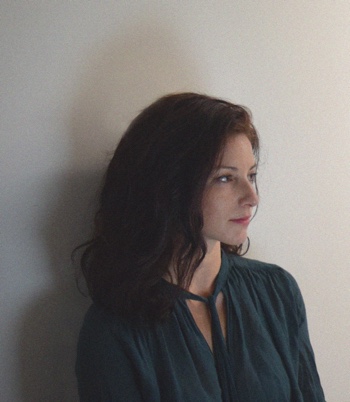 I never went to a film school, but it sort of presented itself as something interesting that I thought I could do. I researched the production designers that were based in New York City, hoping to get an apprenticeship. Mark Friedberg was the one I wanted to work for, and luckily when I reached out to him, he got me a PA job within about a month. I did a few projects with him as a PA over the next two years, and I thought that art department coordinator was the next logical step. I wanted to learn about what everybody does, how to work with the budget, etc, and that’s what I did for about a year. While I was doing that, I started drafting and doing graphics as an assistant art director, and continued working my way up really.
I never went to a film school, but it sort of presented itself as something interesting that I thought I could do. I researched the production designers that were based in New York City, hoping to get an apprenticeship. Mark Friedberg was the one I wanted to work for, and luckily when I reached out to him, he got me a PA job within about a month. I did a few projects with him as a PA over the next two years, and I thought that art department coordinator was the next logical step. I wanted to learn about what everybody does, how to work with the budget, etc, and that’s what I did for about a year. While I was doing that, I started drafting and doing graphics as an assistant art director, and continued working my way up really.
Kirill: If I can bring you back to those few months in this field, do you remember what was the biggest surprise for you as you saw how productions work from the inside?
Anastasia: I think it was seeing how many people are involved in each department, and how much detail goes into everything. I thought that since it’s on camera, and the audience is so far removed from everything, that these tiny details wouldn’t be noticed. And then pretty quickly I realized that they do matter, even more than a lot of other things.
Kirill: Has working in the industry ruined, in some way, the enjoyment of going out and seeing a movie in the theaters, as you know that what we see on that screen is not real, in a sense?
Anastasia: Definitely. I try to keep myself removed from all that. But if I love a set, I will keep my attention on the way it is framed, or the color palette. I will also start thinking if it was built on stage, or shot on location. I do that all the time, no matter what. It’s hard for me not to think about it. If there’s a tense moment or a very fast moving sequence, I’ll be taken out of it. But I always go back to think about the sets, unfortunately [laughs].
Kirill: When you look back at your earlier productions that are a few years into the past, what stays with you? Are those the good parts that you remember, or the stressful ones?
Anastasia: I remember both. The stressful parts end up fading. I know that I was stressed on every job that I’ve done so far, during certain moments of it. If it’s a big stress, it stays with me, but if it’s the general stress, my memories are just that I worked a lot. I also remember the rewarding moments, and things that were fun to work on.
I learn from everything. If I was stressed about something in particular, I don’t think I’ll be stressed about that particular thing again in the future. I learned from it. I learned how to not create stress around it.
Kirill: Is there such a think as a production with no stress?
Anastasia: There are productions that have, perhaps, a couple of stressful days. I don’t think there’s a production that is stressful every single day from the very beginning. I think there are certain anxieties that go away with experience.
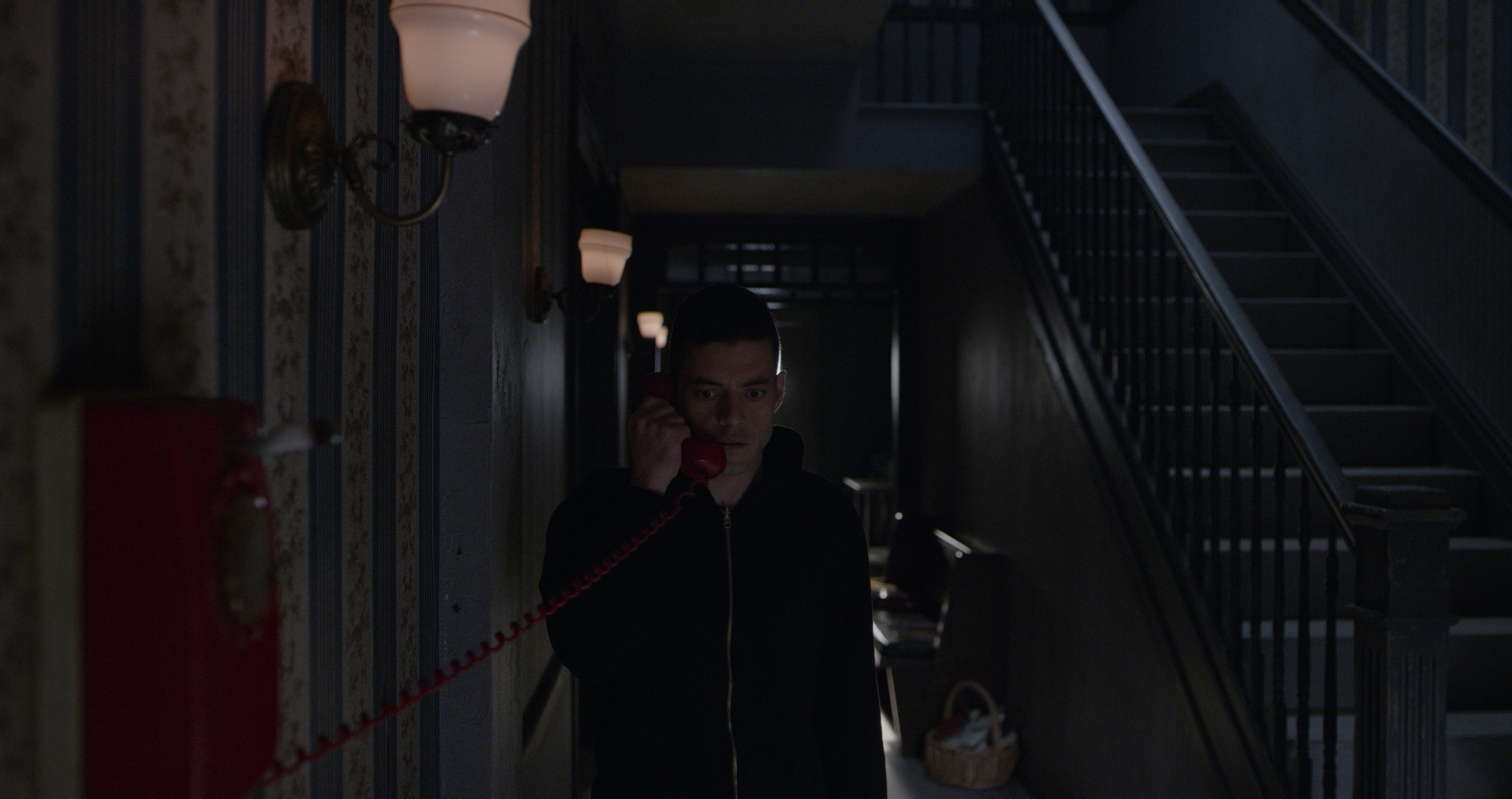
Continue reading »
Continuing the ongoing series of interviews on fantasy user interfaces, it gives me great pleasure to welcome Andrea Braga. In this interview we talk about the beginning of his career working on military / futuristic UI graphics for four installments in the Call of Duty franchise, the transition to the world of screen graphics in feature films, differences in working in pre and post production, the importance of clarity and structure in design, exploring the futuristic technology and making it work to support the story, and the time that goes into creating graphics for dozens of screens that we see in contemporary sci-fi productions. As we discuss all this and more, we dive deeper into Andrea’s work on “Mission Impossible: Rogue Nation”, “Passengers”, “Life” and “Ghost in the Shell”.
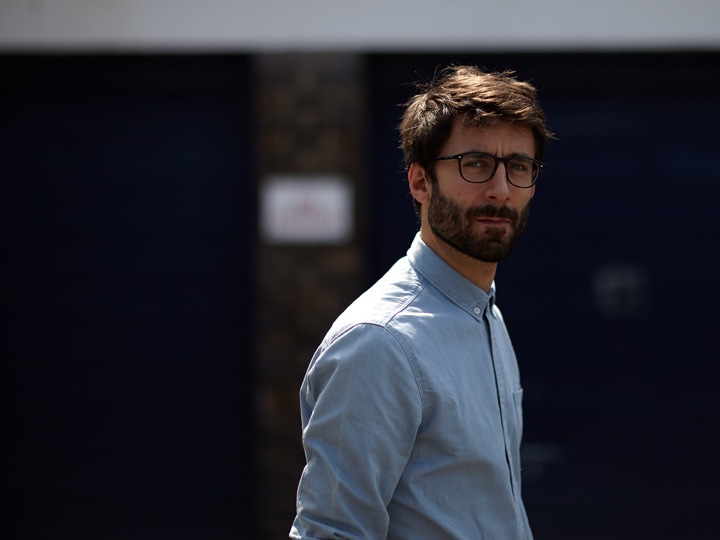
Kirill: Please tell us about yourself and your path so far.
Andrea: Going back to the beginning, I studied aerospace engineering in Italy. Then I moved to product design, and finally communication design when I was at the University of Milan. In EU we have the Erasmus program where you can go and study abroad for a few months. I went to Porto in Portugal, and that was the first time I worked with video – filming, graphics, animation. I loved it.
When I finished my studies, I bought a ticket to London. When I got here, I was very lucky that I met Allen Leitch who founded Spov. We both started in product design, and perhaps because of that he was interested. He gave me the chance to work with them, back when the studio was really small. I worked with them for a month, and then I found an internship in Copenhagen with Frame studio. That was a great experience thanks to the amazing people and super talented designers I had the opportunity to work with. A small studio at the time but fully international with full timers and freelancers from all over the world.
Unfortunately I wasn’t hired at the end so I went back to London and Spov offered me a job as a freelancer. My first project was Call of Duty: Black Ops. When I told them I’ve never heard of Call of Duty, everybody was laughing at me. But that probably was a good thing. I had a fresh mind, since I didn’t know anything about it. I spent around ten months out of a year freelancing on these big projects for Spov being part of their design team. The big titles have big budgets, so you can spend more time on designing motion graphics. You can dig into it, and do multiple rounds with the client.
I worked on four installments in the Call of Duty franchise, and it was during that time that I was exploring the military / futuristic UI graphics. The design director at the time, Yugen Blake, was my mentor. He saw that I was doing well in that area, and he gave me more responsibility. As I got into it, I started doing a lot more of it, and I got the chance to lead the screen graphics section of Call of Duty: Black Ops 2. It was a very good experience, designing as well as managing the process of making screen graphics.
And from there, without really knowing it, I jumped into working on movies. It was really exciting. Games are great and the quality is growing so much, but I have never been into them, while movies for me are more fascinating on a personal level.
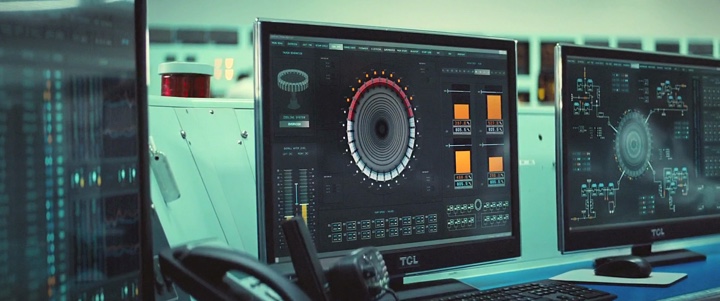
Screen graphics for “Mission Impossible: Rogue Nation“. Courtesy of Andrea Braga.
Kirill: Would you say that screen graphics in movies are mainly there for the camera, with most of it serving as set dressing on all those background screens? It’s not that I as a viewer can interact with those graphics or even spend more than a few seconds looking at them in detail.
Andrea: The screen graphics that I was working on for Call of Duty were mainly cinematic cuts that are shown between levels. It is for the final consumer, but there is no interaction like the UI you find inside the actual game play.
I know what you mean when you’re talking about screen graphics in movies, because you have a lot of background screens. It’s noise that embellishes the shot. But the most important UI in a movie is the one that helps telling the story. Those hero screens are there for the actors to look at, but in the end it’s mainly for the audience to read, as people need to understand what is going on. Especially as sometimes actors have to the deal with “green” monitors filled with graphics only in post production.
The main bulk of the work though is in the background, especially for sci-fi. If you have a spaceship, you have to fill it with loads of screens. That’s more like set design.
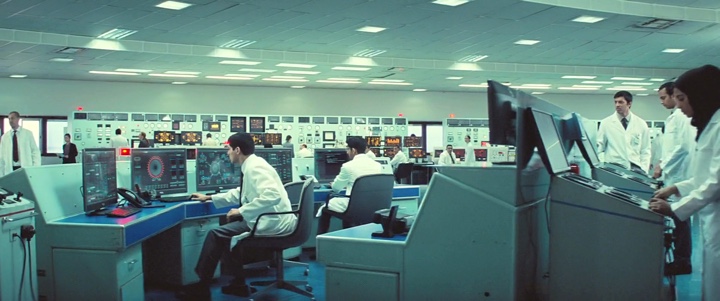
Screen graphics for “Mission Impossible: Rogue Nation“. Courtesy of Andrea Braga.
Kirill: That’s a relatively recent thing as the hardware is so cheap these days. If I look at something like the original Alien, or 2001: Space Odyssey or even the more recent Fifth Element, they didn’t have as many screens aboard the ships as we see these days.
Andrea: That’s true. Everything is more accessible now. But it’s also how you imagine the future. Back in those days, computers were not as present in our daily lives. Maybe when people were imagining the future, they were thinking about having computers, but not as many as we’re thinking of now where everything is interactive.
What we do is based on technology. Every now and then I freeze for a moment. I think about all the applications that I have on my phone, and how I would never have expected certain functionality a couple of years ago. I’m working with technology every day, and I’m still impressed with the progress that we’re making on the daily basis. It’s not about the massive technology, but just the everyday things. And there’s going to be something a year from now we can’t even imagine today that will be a part of our everyday routine.
That might have been the thinking back in 1979 when they were working on the original Alien. The idea wasn’t to have dozens or hundreds of screens on that spaceship. And now when you’re thinking about the future, it’s all screens and holograms. It depends on the context of the time, and what they are pushing.
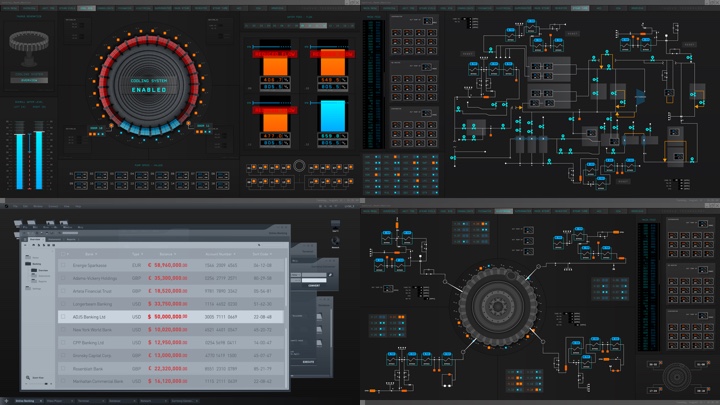
Screen graphics for “Mission Impossible: Rogue Nation“. Courtesy of Andrea Braga.
Kirill: As you started working on Mission Impossible: Rogue Nation as your first movie production, do you remember what was the most surprising or unexpected thing for you in doing screen graphics for feature films?
Andrea: I’ll have to go back to those hero screens that we were talking about earlier. It’s those screens that have to tell the story, and of course I knew that such a screen would have to be done properly. But I think that I was shocked by how important it was for that screen to be 100% clear. Sometimes it’s better to make such a screen extra clear so that the audience understands it immediately. It’s not that the audience is stupid, but you can’t risk them not to follow the story.
Clarity is the main thing in any design. You’re not just doing something for the sake of it. We have to solve a problem, which in this particular case is telling a story. There must be a reason why you’re doing graphics in a certain way. When I was working on MI5 – Rogue Nation both the director and the editor were very insistent on making everything bold and prominent.
It was a bit frustrating in a way. When you’re designing, you have your creative process, and you want to do what you think is right. But I had to compromise that with clarity.
Kirill: What kind of clarity are you referring to?
Andrea: Sometimes when you are happy with your design it still might not be considered clear enough for the audience to understand the message.
And so they keep referencing back to the usual red is bad, green is good. Make it bigger. Make it louder. Make it brighter. In my opinion though sometimes you can achieve the same level of clarity without becoming so obvious.
Continue reading »
Continuing the ongoing series of interviews on fantasy user interfaces, it gives me great pleasure to welcome Ryan Jefferson Hays. Over the last twenty years his career took him through the worlds of multimedia, web design, TV, video games and, most recently, feature films. At Territory he worked on “Guardians of the Galaxy” and “Jupiter: Ascending”. At SPOV, in addition to a variety of game cinematics for major titles, he worked on “Mission Impossible: Rogue Nation”. And as the creative director at MPC his job was to oversee everything that went into making the digital worlds on “Passengers” and “Ghost in the Shell”.
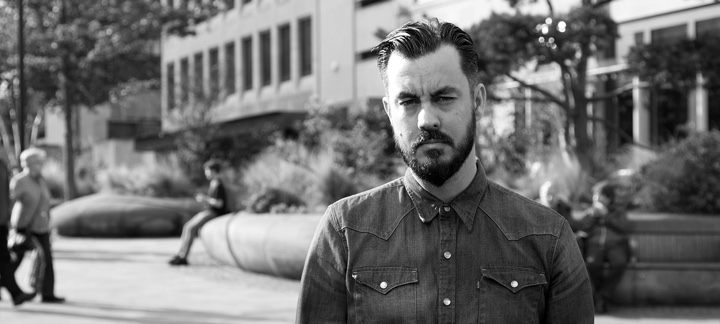
Kirill: Please tell us about yourself and your path so far.
Ryan: I’m from Australia originally, a little place in Western Australia called Perth. I went to an art school there, majoring in multimedia. During my last year, I joined a company called Max Multimedia that specialized in music and sports. Their focus was on multimedia and CD-ROMs, all the way back in 1992-93. The dot-com boom was in full force, and there was a lot of money thrown around, with young kids and fast cars. And then the company went bust after six months [laughs], and I was one of the first ones to fly the coop.
I moved to Sydney in 2000, joining a web company called Massive. They did traditional web sites, and I got bored really quickly. At that point I was into Flash and Director. Director used a programming language called lingo and it was very easy to come up with weird animations. At the time I was part of a design collective called Australian Infront, which grew from a few people to host design meets and doing the conference circuits over time. Through Infront I met Dom Bartolo who worked as a broadcast designer, and after seeing my work he said that I should probably get into TV.
Through that connection I started at Foxtel which is a cable television company that had around 120 channels at the time. I worked on movies, documentaries and other productions, with my main focus on rebranding the sports channels. Then, around 12 years ago, I met my wife Jasmine. We couldn’t afford a house in Sydney so the idea was to move abroad for 2 years and save for a deposit, the aussie dollar at the time was very low so the exchange rate would help when returning to Aus. The choices were New York or London, we chose London as Jasmine has family there. Initially I started working for various television production companies then after a few years in TV I moved into video games, which I guess was the start of the move into feature film work.
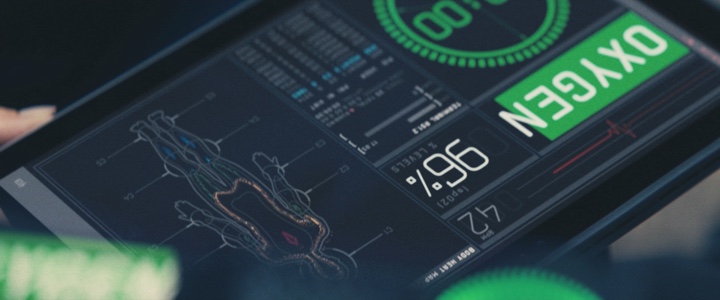
Screen graphics for “Mission Impossible: Rogue Nation”. Courtesy of Ryan Jefferson Hays.
I worked for a company called SPOV for about five years, on game titles such as Call of Duty: Black Ops 1 & 2, Modern Warfare 3, Advanced Warfare, Resistance 3 and Titanfall. I was working on in-game cinematics with Spov, which incorporated UI and 3D narrative work. Then I got a call from David Sheldon Hicks. He used to work at SPOV before starting Territory so new of the work I had produced. I joined them, and my first job at Territory was on Killzone: Mercenary as the 2D lead. The very next production at Territory was my first feature film – Marvel’s “Guardians of the Galaxy”.
Me and another designer, Yugen Blake were tasked with pitching on the project for Territory based on the early script we received. We covered a load of different design aspects in that pitch and worked our asses off which ultimately helped win the job for Territory. As you can see it’s been a linear progression in my career, starting in multimedia, then web sites, then TV, then video games and finally film. I am not sure where the next step is to be honest.
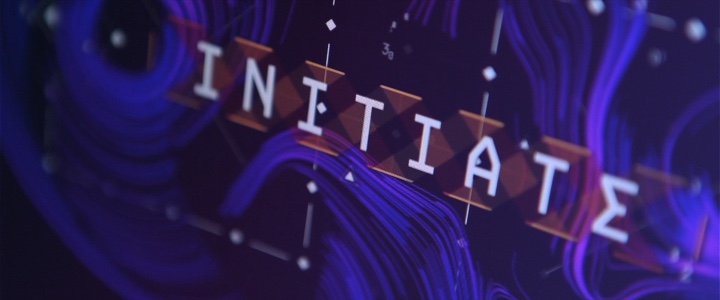
Screen graphics for “Jupiter: Ascending”. Courtesy of Ryan Jefferson Hays.
After Guardians I moved onto “Jupiter Ascending”, working on the set with Wachowskis. It was a great experience to be on that set, even though that was the moment I lost the idea of the ‘magic of film’ [laughs]. You see people with fire extinguishers, pushing the side of a cardboard box with actors inside it imagining it’s a spaceship of some sort. You spend 12-14 hours a day, on a film lot in the middle of nowhere, because all the films that are filmed in London are actually filmed on a lot an hour or two outside the city. You get there when it’s dark, and you leave when it’s dark.
But it was fun project to work on and sitting next to the Wachowskis on set was a great memory. I worked with Nik Hill who was a junior designer at that point, and it was a huge learning curve for the both of us. You need to work very quickly in pre-production, banging out designs all day and not really seeing any of it until it comes out in the theater.
Kirill: As we’re talking about your first couple of productions, do you remember what was the most surprising or unexpected part of it?
Ryan: On Guardians I was not expecting the huge work load needed for the film, it was immense. There was a moment when we first walked into the boardroom filled with concept art. They had hundreds of images along the walls, and miniature sets on the desks. The amount of work and detail that went into the pre-production before they started building anything was incredible. That was the moment when it hit home how big that production was. It wasn’t just a few people working on it before we joined. They had a load of people working on it for years before we had a chance to see it. There was so much hard work gone into it, and it’s really great to see that.
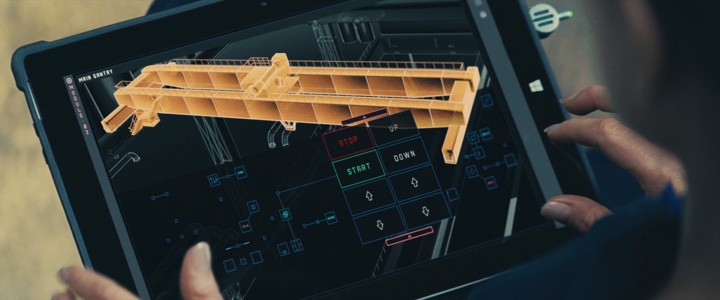
Screen graphics for “Mission Impossible: Rogue Nation”. Courtesy of Ryan Jefferson Hays.
Things in TV production seem a bit more guerilla but you work it out, more or less. You don’t have a lot of time in TV, whereas what I saw on Guardians was a big eye-opener. I didn’t have any problems with that job at all, and it was great experience. The script was so open and vivid, and you could just do whatever you wanted. We were always in discussion with the production designers about the right direction for the film, and they told us to go with it. Usually when you work with UI, you only have a certain amount of colors. You don’t do pink or orange, for example. But they didn’t care.
The world was so vivid in color and there was so much going on, and someone made the comment that the world was vomiting color [laughs]. The Marvel franchise was coming from Iron-Man and Avengers, and I think that’s why they let us go wild with the look-and-feel. And it worked. Probably the only place that had structure was the prison. Those screens reflected that corporate entity inside the world, while everything else was all over the place. Territory is really great at doing those kinds of screens, where everything needs to be based on a strong grid because there’s a lot going on.
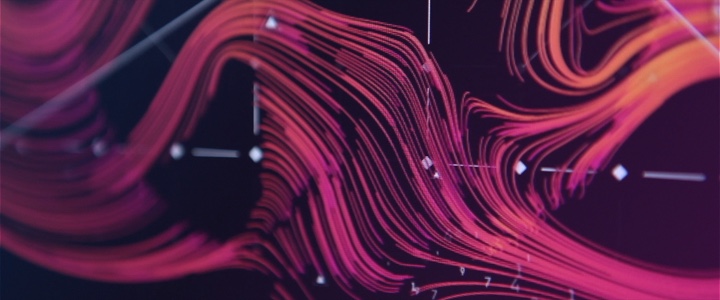
Screen graphics for “Jupiter: Ascending”. Courtesy of Ryan Jefferson Hays.
Kirill: You mentioned that your second film was “Jupiter Ascending”. How different was that in the sense that most of the screens were for aliens?
Ryan: Yeah the major challenge for “Jupiter Ascending” was to establish a look-and-feel for the alien interfaces that made it clear what was going on, but also make it feel very alien for the viewer at the same time. One of the screens we needed to work up was the navigation screens used in the small jump ship. The problem we needed to solve was there’s so much space traffic going on and between hundreds of worlds, and there must be a simple but elegant way to navigate this big mess. We came up with the idea of mapping possible routes for star constellations with flowing line work built from thousands of particles for the main interface, these particles could then reform into different maps once the ship had finished its warp jump. The idea was we were mapping out trade routes and paths for the different spacecrafts in different constellations at the same time. In the end it was very basic, but I think it got the point across.
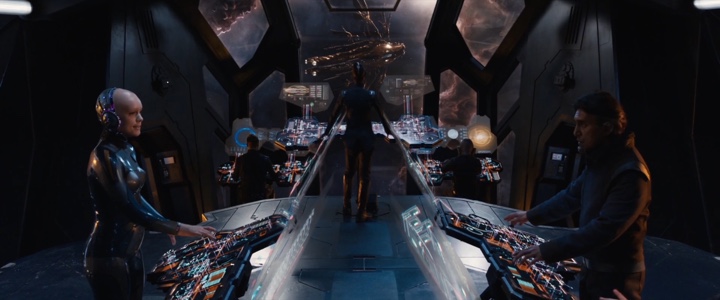
Screen graphics for “Jupiter: Ascending”. Courtesy of Ryan Jefferson Hays.
Continue reading »
![]()
![]()
![]()
![]()